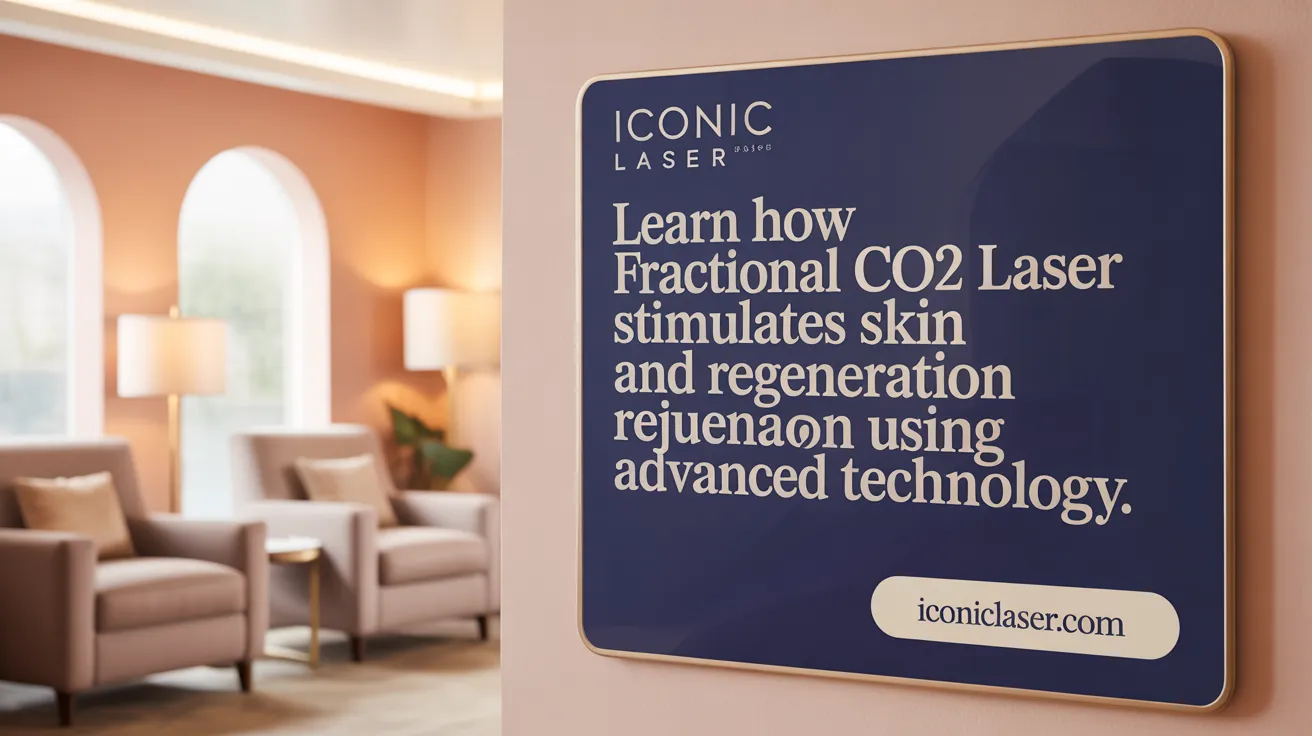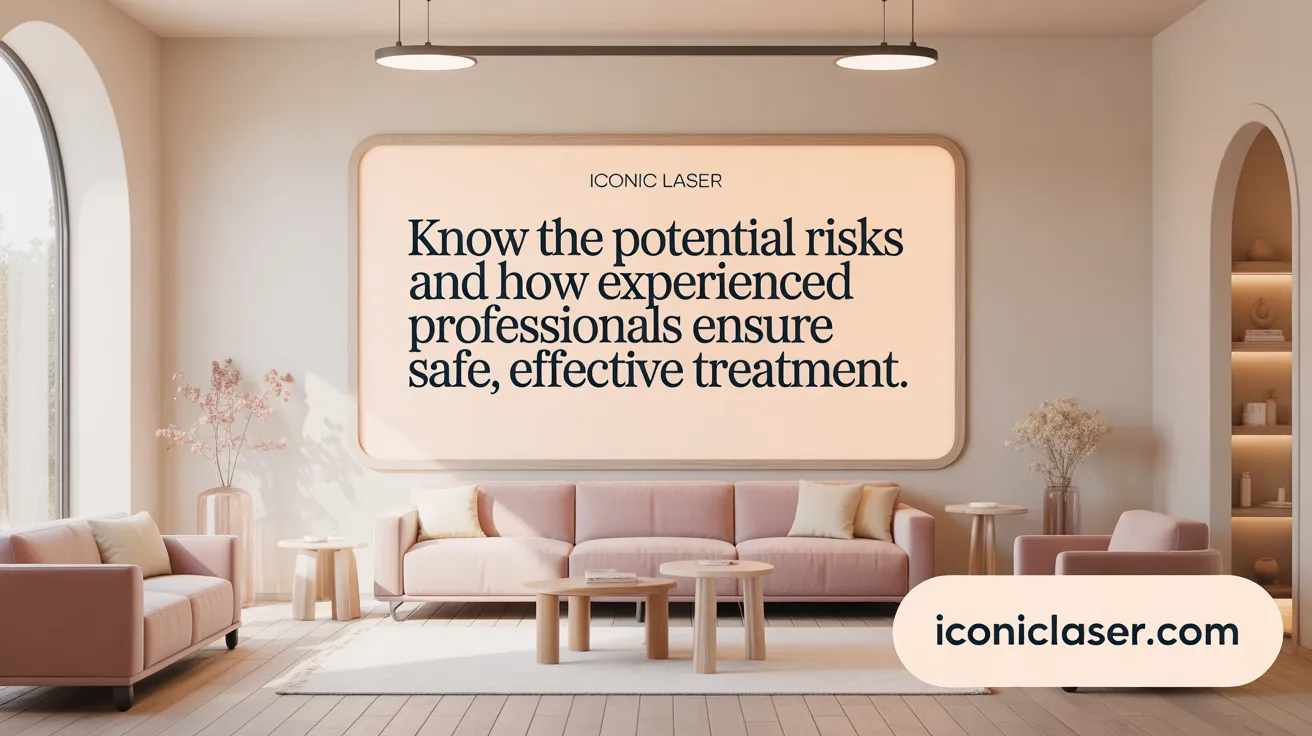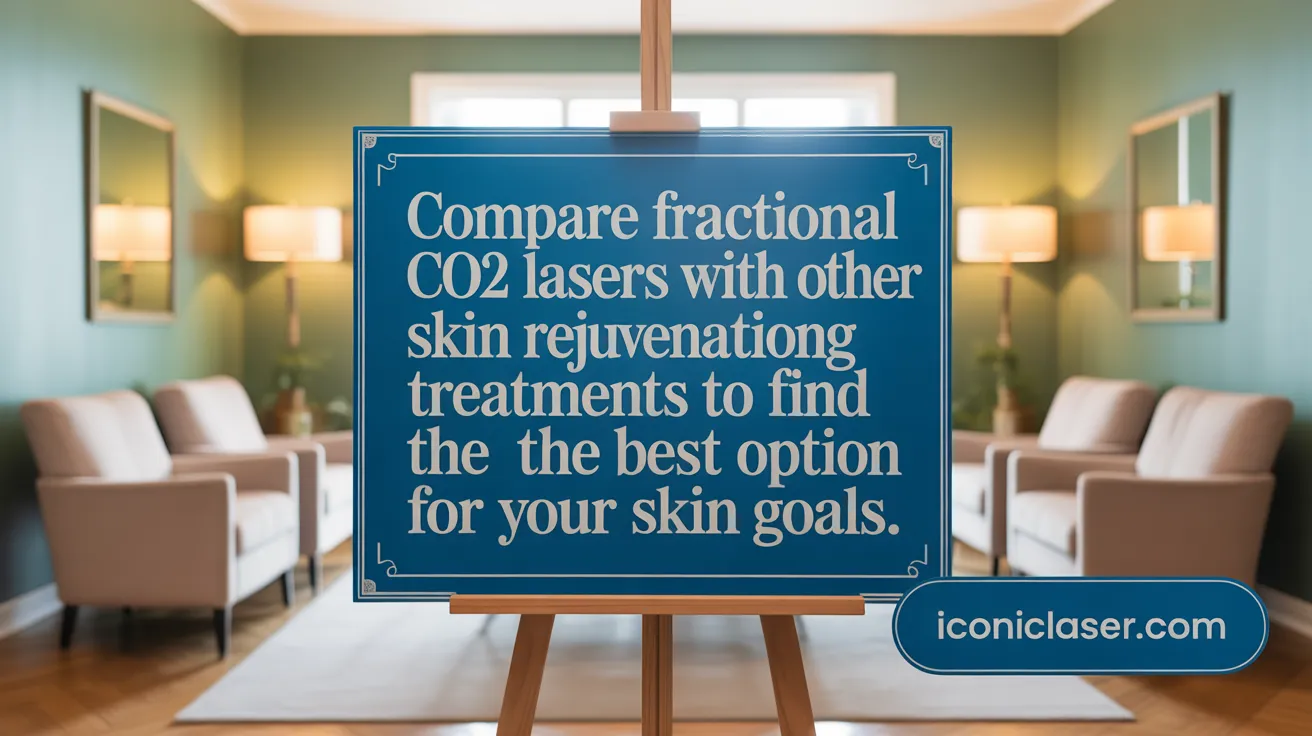Discovering Non-Surgical Skin Rejuvenation
Fractional CO₂ laser treatment has emerged as a leading non-surgical solution for deep skin renewal, offering transformative results for those battling wrinkles, scars, sun damage, and other signs of aging. Combining cutting-edge laser technology with a fractional delivery system, this procedure revitalizes skin texture, tone, and firmness with minimal downtime. This article delves into the science behind fractional CO₂ lasers, candidacy criteria, procedure details, benefits, recovery, safety considerations, and how it compares with other skin rejuvenation methods to empower readers to make informed choices about enhancing their skin's radiance and youthfulness.
Understanding Fractional CO₂ Laser Skin Resurfacing: Mechanism and Technology

What is fractional CO₂ laser skin resurfacing and how does it work?
Fractional CO₂ laser skin resurfacing is a modern, minimally invasive procedure that harnesses the power of targeted laser energy to improve skin appearance and texture. The laser used emits light at a wavelength of 10,600 nanometers, which is highly absorbed by water molecules within the skin tissues. This specific wavelength allows the laser to precisely ablate the outer skin layers, creating controlled microscopic zones of thermal injury.
These tiny columns, often called microbeams or microthermal zones, penetrate deep into the dermis, heating the underlying tissue to trigger a natural wound-healing response. This process stimulates the production of new collagen, a protein essential for skin firmness and elasticity. Essentially, the laser works by inducing controlled micro-injuries that promote skin regeneration while preserving surrounding tissue, leading to faster recovery, fewer side effects, and more natural results.
As the thermal zones heal, they initiate a cascade of biological responses, including collagen denaturation at approximately 66.8°C, which causes the fibers to contract and stimulates new collagen synthesis. Over several months, the skin becomes denser, tighter, and smoother. This combination of controlled ablation and collagen remodeling addresses various skin concerns like fine lines, wrinkles, scars, sun damage, and uneven skin tone.
Compared to traditional ablative lasers that remove large surface areas of skin, fractional CO₂ laser treatment offers a more targeted approach. It results in significant skin rejuvenation with less downtime and fewer risks of pigmentation changes or scarring. In summary, fractional CO₂ skin resurfacing leverages high-precision laser technology to stimulate your body's natural healing process, restoring a youthful, radiant skin appearance through controlled skin injury and collagen enhancement.
Who Should Consider Fractional CO₂ Laser Treatment? Candidacy and Suitability

Who is a suitable candidate for fractional CO₂ laser treatment?
A suitable candidate for fractional CO₂ laser (FACL) treatment is typically a middle-aged individual, aged 40–60 years, with Fitzpatrick skin types I–III and thin to moderate skin thickness.
They should have superficial skin concerns such as fine lines, wrinkles, dark spots, and shallow scars. Deep scars, significant wrinkles, or stretch marks are less likely to be fully addressed with this procedure.
Candidates must have healthy, intact skin without active infections, recent sunburn, or other skin conditions that might impair healing. It’s essential to avoid treatment if there are active herpetic lesions, as the laser can trigger outbreaks.
Pregnancy and breastfeeding are additional contraindications due to the potential for skin changes and the need for post-treatment care.
Patients with high pain tolerance and those willing to follow a diligent skincare routine, including prophylactic medications like antivirals, tend to be better suited.
It’s important for candidates to have realistic expectations about the results, understanding that improvements in skin texture and tone may take months to fully develop. Preparation efforts such as sun protection and avoiding certain medications are critical.
In summary, ideal candidates are generally healthy adults seeking treatment for mild to moderate early skin aging signs, who are motivated to maintain post-procedure care for optimal outcomes.
Clinical Benefits and Effectiveness: Reducing Wrinkles, Scars, and Signs of Aging
Can fractional CO₂ laser effectively reduce deep wrinkles and scars?
Yes, fractional CO₂ laser can effectively reduce deep wrinkles and scars by precisely targeting tiny areas of the skin and promoting collagen production. The laser creates controlled micro-injuries that trigger the body's healing response, resulting in new collagen fiber formation. This process helps improve skin firmness and elasticity, making it especially useful for deep wrinkles, acne scars, and other skin irregularities.
The treatment minimizes thermal damage by focusing on small zones, which reduces downtime and side effects compared to older, fully ablative lasers. Patients often notice smoother skin and diminished scars after a series of sessions. Because collagen continues to develop over several months, the improvements can be long-lasting, often extending for years.
Overall, fractional CO₂ laser therapy is recognized for its ability to significantly enhance skin appearance, providing a durable solution for profound skin concerns with fewer side effects and shorter recovery periods.
Navigating the Procedure: Pre-Treatment, Treatment, and Aftercare Essentials

What pre-treatment preparations and post-treatment care are necessary for fractional CO₂ laser procedures?
Prepping for a fractional CO₂ laser treatment requires careful planning to ensure safety and effectiveness. Patients should avoid sun exposure and tanning beds for at least two weeks prior to the procedure, as the skin needs to be in optimal condition. Additionally, irritating skincare products such as retinoids, acids, or other exfoliants should be discontinued about a week before treatment to minimize skin sensitivity.
On the day of the procedure, arriving with clean, makeup-free skin helps reduce the risk of infection and allows the laser to work more effectively. Patients might also need to pause certain medications—especially blood thinners or anti-inflammatory drugs—as advised by their healthcare provider.
It is important to inform your provider of any history of cold sores; in such cases, antiviral medication may be prescribed beforehand as a preventive measure.
Post-treatment, diligent skin care is crucial. Gentle cleansing with mild solutions, such as diluted vinegar soaks, helps keep the skin clean without aggravating it. Applying a healing ointment like Aquaphor or petroleum jelly continuously helps retain moisture and creates a protective barrier against environmental irritants.
Sun protection is vital; using a broad-spectrum SPF 30 or higher daily is recommended for at least three months after the procedure to prevent hyperpigmentation and further skin damage. To help reduce swelling and discomfort, cold compresses can be applied, and sleeping with the head elevated minimizes swelling.
Avoid strenuous activities, hot showers, saunas, and direct sunlight for several days to weeks, depending on the depth of the treatment. During healing, refrain from using irritating skincare products and do not pick at or scratch the skin. Resuming full skincare routines, including retinoids, is generally advised after complete healing, which usually takes about two weeks.
Following your healthcare provider’s specific instructions will promote proper healing, ensure the best possible results, and minimize risks of complications.
Safety, Risks, and Side Effects: What Patients Need to Know

What are the potential risks and side effects associated with fractional CO₂ laser skin resurfacing?
Fractional CO₂ laser skin resurfacing is generally effective and safe when performed by experienced professionals. However, like all medical procedures, it involves some risks and possible side effects.
Common temporary side effects include redness, swelling, skin irritation, and discomfort, which usually resolve within a few days to a week. Patients might also experience mild skin peeling or flaky skin as part of the healing process.
More serious but less common complications involve infection, scarring, and pigmentation changes. Infection can occur if bacteria or fungi enter micro-injured areas and is typically linked to inadequate postoperative care. Scarring, occurring in about 3.8% of cases, can be caused by excessive laser energy, improper technique, or infection. Hyperpigmentation (darker spots) is more common in individuals with darker skin types, such as Fitzpatrick types IV and V, but modern techniques have minimized this risk. Hypopigmentation (light spots) is quite rare.
Herpes simplex virus reactivation is another concern, especially in patients with a history of herpes outbreaks. Preventive antiviral medication is usually prescribed to mitigate this risk.
The risk of eyelid ectropion, although very rare, emphasizes the need for careful treatment planning around sensitive areas.
How does skin type influence risk profiles?
Individuals with darker skin tones are more susceptible to pigmentation issues such as hyperpigmentation following laser resurfacing. Proper patient selection and tailored laser settings are crucial for these patients.
Why is practitioner expertise important?
Experienced practitioners understand how to adjust laser parameters according to skin type and condition, reducing unnecessary injury. They also know how to manage the procedure and address any side effects promptly.
How can side effects be managed or minimized?
- Pre-treatment assessment and selecting appropriate candidates
- Using the correct laser settings to suit skin type and concern
- Administering prophylactic antiviral medications for herpes prevention
- Strict postoperative care, including infection prevention and sun avoidance
- Providing detailed patient instructions to minimize trauma and pigmentation issues
What about myths versus facts regarding safety?
Many myths exist that laser procedures are extremely risky or cause irreversible damage. In reality, with proper technique, patient selection, and post-care, fractional CO₂ laser treatments are safe and produce long-lasting results. It’s essential to seek treatment from qualified professionals to ensure safety.
Understanding these risks helps patients make informed decisions and helps practitioners plan optimal, safe treatments tailored to individual needs.
Comparing Fractional CO₂ Laser with Other Skin Rejuvenation Techniques
 Fractional CO₂ laser therapy often stands out among skin resurfacing options due to its ability to reach deeper layers of the skin and produce more pronounced results. Unlike nonablative lasers and chemical peels, which mainly target surface layers, fractional CO₂ lasers create tiny micro-injuries that deeply stimulate collagen production and remove damaged tissue, making them highly effective for severe aging signs, deep scars, and significant sun damage.
Fractional CO₂ laser therapy often stands out among skin resurfacing options due to its ability to reach deeper layers of the skin and produce more pronounced results. Unlike nonablative lasers and chemical peels, which mainly target surface layers, fractional CO₂ lasers create tiny micro-injuries that deeply stimulate collagen production and remove damaged tissue, making them highly effective for severe aging signs, deep scars, and significant sun damage.
When comparing fractional CO₂ lasers to Er:YAG lasers, the latter are gentler and mainly work on superficial skin layers, resulting in milder results and shorter downtime. Nonablative laser treatments, including certain pulsed light therapies, are less invasive but generally offer more subtle improvements.
In terms of effectiveness versus downtime and side effects, fractional CO₂ laser treatments tend to require a recovery period of about one to two weeks, with some redness and peeling. Conversely, nonablative treatments often involve minimal downtime but may need multiple sessions to see noticeable changes.
Different skin concerns call for different approaches. For instance, deep wrinkles or severe scars often respond best to fractional CO₂ laser, while surface pigmentation issues or mild aging signs may be adequately addressed with lighter treatments or chemical peels. Patient skin type also guides the decision, as darker skin tones face higher risks of pigmentation changes from aggressive lasers.
Technologically, advancements like proprietary systems (e.g., Cynosure's SmartSkin™ CO₂ laser or Lumenis UltraPulse) improve treatment comfort and precision. These systems often incorporate features for customizing treatment depth and pattern, reducing discomfort and recovery time.
Moreover, combining fractional CO₂ laser with other aesthetic modalities such as PRP or nanofat injections can enhance outcomes for scar and skin texture improvements.
Summary Table:
| Treatment Method | Depth of Action | Effectiveness | Downtime | Side Effects | Suitable for |
|---|---|---|---|---|---|
| Fractional CO₂ Laser | Deep | High for wrinkles/scars | 1-2 weeks | Redness, swelling, pigmentation | Severe concerns, active scars |
| Nonablative Lasers | Surface | Mild to moderate | None to days | Rare pigmentation changes | Mild aging, pigmentation |
| Er:YAG Laser | Superficial | Moderate | Few days | Slight redness, pigmentation | Fine lines, superficial scars |
| Chemical Peels | Surface | Mild to moderate | Few days to a week | Redness, peeling | Mild aging signs, pigment |
Choosing the right treatment depends on individual skin conditions, desired results, and tolerance for downtime. For more aggressive aging and scarring, fractional CO₂ laser remains a top choice but requires consideration of recovery time and potential side effects.
Embracing a New Era of Skin Renewal
Fractional CO₂ laser skin resurfacing stands at the forefront of non-surgical skin rejuvenation, delivering profound improvements in skin texture, tone, and elasticity by harnessing advanced laser technology and the body's natural healing mechanisms. Ideal candidates benefit from tailored treatments that address deep wrinkles, scars, sun damage, and skin laxity with minimized downtime and sustained results lasting years. While the procedure involves transient side effects and requires careful pre- and post-care, modern fractional technology and skilled practitioners have significantly enhanced safety profiles, making this treatment a versatile, effective alternative to surgery. For individuals seeking deep skin renewal without invasive measures, fractional CO₂ laser resurfacing offers a scientifically validated, customizable pathway to revitalized, radiant skin.
References
- Laser resurfacing - Mayo Clinic
- Deka CO2 Laser Westport CT | Non-Surgical Skin Rejuvenation ...
- fractional co2 laser skin rejuvenation
- Fractional Carbon Dioxide Laser Resurfacing - PMC
- CO2 Fractional Laser: 10 Proven Benefits for Skin Renewal
- SmartSkin™ CO2 Laser Skin Resurfacing - Dr. Petti
- CO2 Laser Resurfacing in Arvada, CO | Smooth, Renewed Skin
